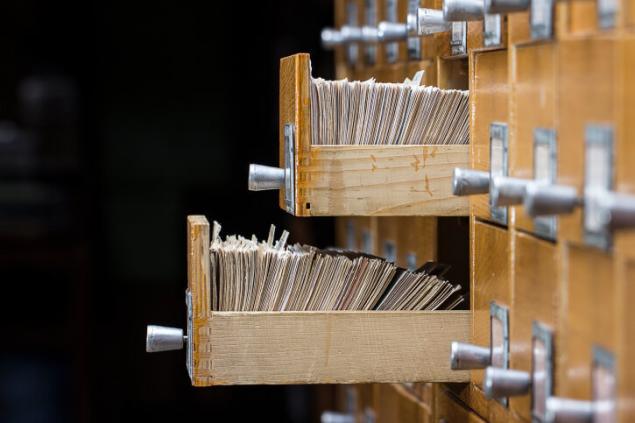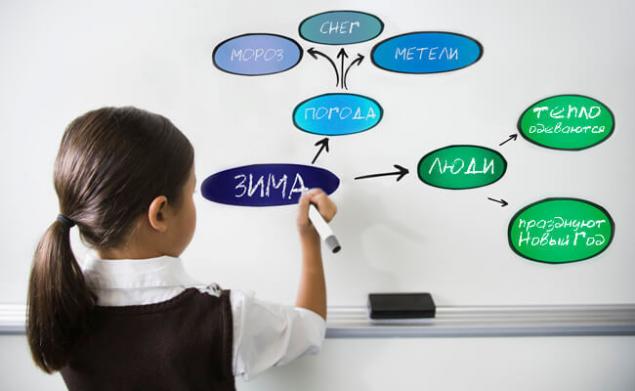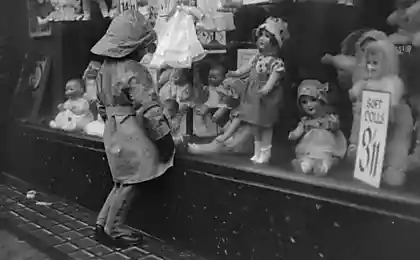442
How to teach a child to memorize
The main difficulty of the child in the first class — large amount of information. How to help him cope with the workload?
Maybe from the volume of school knowledge and don't seem terrible, but in most cases parents are not particularly put pressure on the child. They are trying to find a way to explain some of the school topics more understandable and, in extreme cases, looking for tutoring or a special group of preparation for school. But after the first of September, the information is still overwhelming to the student's head. How to cope with this stream?

To learn also need to know how Often a child comes to first grade is quite optimistically minded. He believes in himself and expects to become an excellent student. But things are not so easy, not everything. "How so? Am I not good enough?" — think a child. The same questions are asked and parents. After all, before the first class everything was wonderful. The child is able to read and write, and well reasoned. And now the words school and stress have become almost synonymous. Why?
Since ancient times, students were divided into able and Laggards. About the last thought that either a disciple is lazy, or he's not smart enough. Teachers saw this situation the only way out: student should be forced to learn. How? All basically boiled down to increased training load and punishment. In the XX century it was established that children can fall behind in school not only because of the carelessness and lack of abilities. Most children do not have the skill of learning. They have no experience in the head you can organize the material, and there is no algorithms to memorize. Eventually they will, but until that time you have to wait and wait, study and learn.
Remember now or learn later? As you know, there are two main types of memory — short and long term. Short-term memory is only required in order to navigate in current events. When we come home, you can put the bag near the threshold to take off his clothes and shoes. After dressing the man remembers exactly where bag, and moves it to the right place.
But remember to the end of life information about the location of bags no sense. So after a few hours, the brain gets rid of extra weight. Often forgotten, even the fact that the bag somewhere put.
Another thing — the important things and information. They need to keep in a safe place. And this place is a long-term memory.
The main problem with memory is due to ignorance of the characteristics of these two types of memory. Short-term memory has a small volume. For example, once a person can only remember 7-9 numbers or words.
But even this information is not completely converted into long-term memory. If after some time a person to ask to remember those numbers or the words which he had recently memorized, he can name only 3-4. And not the fact that even these 3-4 object go into a long term memory.
In long-term memory is not stored all in a row. The brain retains only what is deemed major, and details may throw out as irrelevant. For long-term memory main — "skeleton" and "muscles"-the details it can increase if necessary. But only if she has the time.
But that's not all! Not enough to put in long-term memory, you need more from there and get it. Then again, there may be problems. Memory does not give all at once, but only in parts, and then not always completely. During its rapid filling without the ability to digest it can give only 30% of its reserves.
How to organize the archives of memory
Imagine that you are an employee of the archive. You need to transfer possession of the documents. You have a small office where you work. And suddenly you start with great force to bring and bring in the materials. Your office is filled with papers to the ceiling. What would you say? You must shout: "Stop! I can't work, I nowhere to turn! I can't handle any paper! Let's take out all the extra and serve your documents in small batches".
Memory is the same. If you push in the area of short-term memory indiscriminately, then it just starts to throw everything away. Throughput in "archive" will be reduced significantly. And from the archive a little that will come out in this Park.
To "archive" worked fine, it is necessary to organize the correct and consistent delivery of information. Then give possibility to our internal archivist to work on. How to do it? Ensure "proper delivery of information to the archive."
1. Specify the delivery format. Before to start something to deliver and put in the archive it is necessary to mark a place where it will lie. To do this, before reading the text, you should read the headings, look at pictures, read the captions under the pictures. This information will be already clear about what will be discussed and in what section of memory it is better to include how many will have "shelves" for partitions.
2. Specify the contents. The child must read the text once and then tell in your own words, what it says. This will allow you to create more exact boundaries for the material that have to be memorized. No matter what the child will say not all or not exactly. Particular accuracy is not required, and if the facts he will remember out of order — not a problem. The only thing you can improve the child to correct to highlight the main idea of the text.
So we put the first piece of information in short-term memory. Now you can give the child a little distracted by something else, not related to the read subject. At this time, short-term memory will gradually begin to transmit information in the repository.
3. Spread out the pieces. Now that you know what the text is about, you can read it more carefully and to spread apart what happens. What happened first, then what? If the text is about winter, what are the signs of winter author describes?
4. Take advantage of the mental map. This is a fairly easy method information present in the graphic algorithm that helps to quickly recall all the contents. The brain itself when memorizing creates such algorithms, but it is possible to help him.
Card draw in a "tree". At its base lies the topic, and moving away from her "branches". What is described in the text about winter? Weather — nature — people. What about the weather? Snow — frost — Blizzard — frost. What about the nature? The river is frozen, the bears fell asleep, hares changed color. What about the people? Dressed warmly — do winter sports — preparing for the New year.

After creating mental maps again is to disconnect and relax for about 15 minutes. You can just give the baby to move, you can give time to put in the portfolio of things for the next day, and you can start to do some other lesson that the child likes or not too annoying.
5. To check learned. Now that we all laid out on shelves, there is only one step. To try how the information will be retrieved from storage. For this child to test. It is not necessary to arrange the examination procedure, just ask a few key questions on the subject. Emphasize that the baby is not very well remembered. If there is any hesitation, then you need this place again to speak. And after 1.5–2 hours to review the topic.
This is just one of many techniques that will help your student to better cope with the task. Do not expect that the child will grasp algorithm on the fly. At first, the mental maps will have to draw you for your student get the gist. But each time it needs more to bring to mapping, so that after some time he began to do it himself.
The whole procedure may seem rather long, but it actually saves time overall, due to the fact that the memory begins to work more efficiently. published
Author: Natalia Stilson P. S. And remember, only by changing their consumption — together we change the world! © Join us at Facebook , Vkontakte, Odnoklassniki
Source: apteka.ru/info/articles/zdorovyy-rebenok/kak-nauchit-rebenka-zapominat/
Maybe from the volume of school knowledge and don't seem terrible, but in most cases parents are not particularly put pressure on the child. They are trying to find a way to explain some of the school topics more understandable and, in extreme cases, looking for tutoring or a special group of preparation for school. But after the first of September, the information is still overwhelming to the student's head. How to cope with this stream?

To learn also need to know how Often a child comes to first grade is quite optimistically minded. He believes in himself and expects to become an excellent student. But things are not so easy, not everything. "How so? Am I not good enough?" — think a child. The same questions are asked and parents. After all, before the first class everything was wonderful. The child is able to read and write, and well reasoned. And now the words school and stress have become almost synonymous. Why?
Since ancient times, students were divided into able and Laggards. About the last thought that either a disciple is lazy, or he's not smart enough. Teachers saw this situation the only way out: student should be forced to learn. How? All basically boiled down to increased training load and punishment. In the XX century it was established that children can fall behind in school not only because of the carelessness and lack of abilities. Most children do not have the skill of learning. They have no experience in the head you can organize the material, and there is no algorithms to memorize. Eventually they will, but until that time you have to wait and wait, study and learn.
Remember now or learn later? As you know, there are two main types of memory — short and long term. Short-term memory is only required in order to navigate in current events. When we come home, you can put the bag near the threshold to take off his clothes and shoes. After dressing the man remembers exactly where bag, and moves it to the right place.
But remember to the end of life information about the location of bags no sense. So after a few hours, the brain gets rid of extra weight. Often forgotten, even the fact that the bag somewhere put.
Another thing — the important things and information. They need to keep in a safe place. And this place is a long-term memory.
The main problem with memory is due to ignorance of the characteristics of these two types of memory. Short-term memory has a small volume. For example, once a person can only remember 7-9 numbers or words.
But even this information is not completely converted into long-term memory. If after some time a person to ask to remember those numbers or the words which he had recently memorized, he can name only 3-4. And not the fact that even these 3-4 object go into a long term memory.
In long-term memory is not stored all in a row. The brain retains only what is deemed major, and details may throw out as irrelevant. For long-term memory main — "skeleton" and "muscles"-the details it can increase if necessary. But only if she has the time.
But that's not all! Not enough to put in long-term memory, you need more from there and get it. Then again, there may be problems. Memory does not give all at once, but only in parts, and then not always completely. During its rapid filling without the ability to digest it can give only 30% of its reserves.
How to organize the archives of memory

Imagine that you are an employee of the archive. You need to transfer possession of the documents. You have a small office where you work. And suddenly you start with great force to bring and bring in the materials. Your office is filled with papers to the ceiling. What would you say? You must shout: "Stop! I can't work, I nowhere to turn! I can't handle any paper! Let's take out all the extra and serve your documents in small batches".
Memory is the same. If you push in the area of short-term memory indiscriminately, then it just starts to throw everything away. Throughput in "archive" will be reduced significantly. And from the archive a little that will come out in this Park.
To "archive" worked fine, it is necessary to organize the correct and consistent delivery of information. Then give possibility to our internal archivist to work on. How to do it? Ensure "proper delivery of information to the archive."
1. Specify the delivery format. Before to start something to deliver and put in the archive it is necessary to mark a place where it will lie. To do this, before reading the text, you should read the headings, look at pictures, read the captions under the pictures. This information will be already clear about what will be discussed and in what section of memory it is better to include how many will have "shelves" for partitions.
2. Specify the contents. The child must read the text once and then tell in your own words, what it says. This will allow you to create more exact boundaries for the material that have to be memorized. No matter what the child will say not all or not exactly. Particular accuracy is not required, and if the facts he will remember out of order — not a problem. The only thing you can improve the child to correct to highlight the main idea of the text.
So we put the first piece of information in short-term memory. Now you can give the child a little distracted by something else, not related to the read subject. At this time, short-term memory will gradually begin to transmit information in the repository.
3. Spread out the pieces. Now that you know what the text is about, you can read it more carefully and to spread apart what happens. What happened first, then what? If the text is about winter, what are the signs of winter author describes?
4. Take advantage of the mental map. This is a fairly easy method information present in the graphic algorithm that helps to quickly recall all the contents. The brain itself when memorizing creates such algorithms, but it is possible to help him.
Card draw in a "tree". At its base lies the topic, and moving away from her "branches". What is described in the text about winter? Weather — nature — people. What about the weather? Snow — frost — Blizzard — frost. What about the nature? The river is frozen, the bears fell asleep, hares changed color. What about the people? Dressed warmly — do winter sports — preparing for the New year.

After creating mental maps again is to disconnect and relax for about 15 minutes. You can just give the baby to move, you can give time to put in the portfolio of things for the next day, and you can start to do some other lesson that the child likes or not too annoying.
5. To check learned. Now that we all laid out on shelves, there is only one step. To try how the information will be retrieved from storage. For this child to test. It is not necessary to arrange the examination procedure, just ask a few key questions on the subject. Emphasize that the baby is not very well remembered. If there is any hesitation, then you need this place again to speak. And after 1.5–2 hours to review the topic.
This is just one of many techniques that will help your student to better cope with the task. Do not expect that the child will grasp algorithm on the fly. At first, the mental maps will have to draw you for your student get the gist. But each time it needs more to bring to mapping, so that after some time he began to do it himself.
The whole procedure may seem rather long, but it actually saves time overall, due to the fact that the memory begins to work more efficiently. published
Author: Natalia Stilson P. S. And remember, only by changing their consumption — together we change the world! © Join us at Facebook , Vkontakte, Odnoklassniki
Source: apteka.ru/info/articles/zdorovyy-rebenok/kak-nauchit-rebenka-zapominat/
























